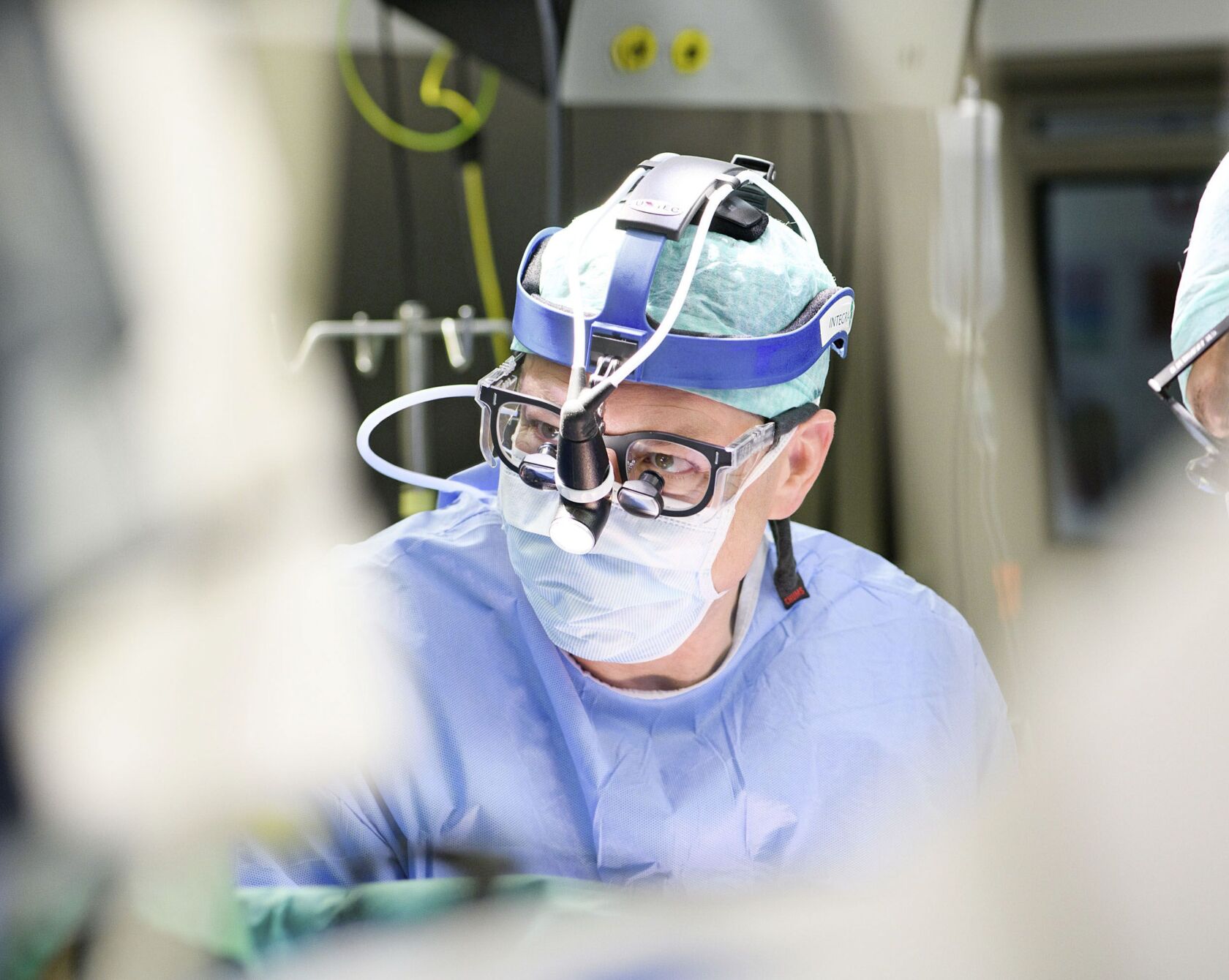José Oberholzer has been operating with the robot for 20 years. He and his team in Chicago were the first in the world to introduce this technique in transplantation.
Minimally invasive procedures, in which instruments fitted with cameras are inserted through small incisions in the skin, have been around for a long time. However, these instruments are stiff, comparable to Chinese chopsticks. In addition, the surgeon only sees a 2D image during these procedures and has to imagine the spatial depth. Complex procedures therefore require a great deal of experience and many years of practice.
Orientation in 3D
In contrast, the robot translates the surgeon’s hand movements one-to-one and can also perform rotations and special angles. It also calculates a 3D visualization, which makes orientation much easier. Another major advantage for José Oberholzer: “The learning curve with the robot is incredibly steep. Surgeons are already independent after just a few operations.”
Targeted use
In José Oberholzer’s view, the use of robotics is ideal for the removal of a kidney (or liver lobe) from a living donor. Four small incisions are made: one on the left and one on the right for the “hands”, a small incision for the camera and a slightly longer one in the bikini area for the actual organ removal. Before the operation, the abdominal cavity is inflated with gas to create space between the organs. During the bikini incision, a special instrument is inserted to separate the organ and pull it out of the abdomen, wrapped in a kind of bag. This minimizes the risk and burden for the donor.

